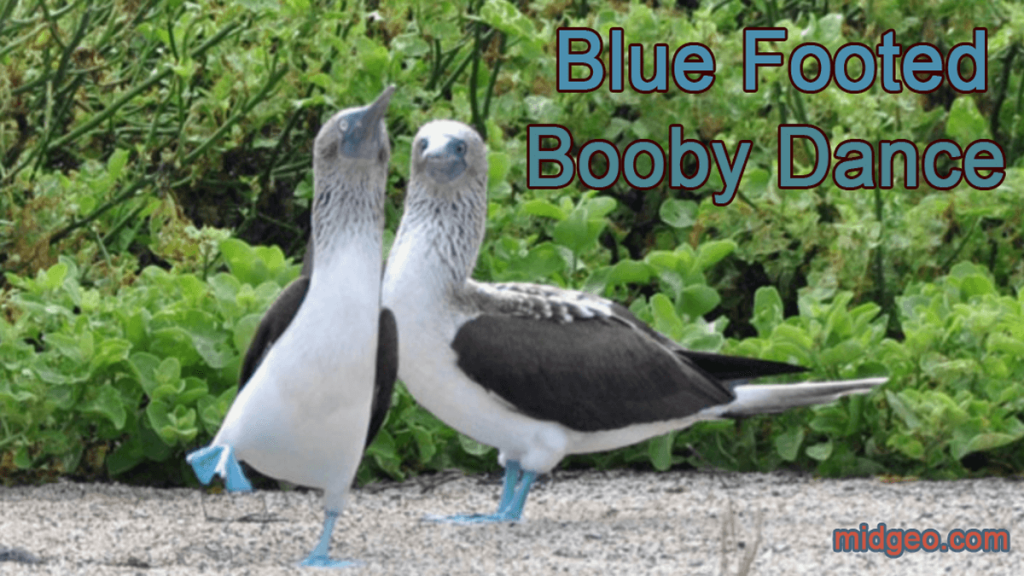Amazing Blue-footed Booby birds

The blue-footed booby bird is actually a marine bird indigenous to tropical and subtropical areas of the central and western Pacific Ocean. It’s one of the six species of the genus Sula, also known as the blue-footed booby bird. It’s easily identified by its prominent, bright blue feet, that’s a trait chosen specifically for mating. In addition, the blue-footed booby bird also has black and white markings on its tail, upper body, and forelegs.

Blue-footed Booby
The blue-footed booby bird was first documented in 1855 from specimens collected near Whatcomett Bay, North Carolina.
The name for this bird was derived because of the way it walks, standing on its toes – similar to a crab. It takes the form of a small, blue-colored, stubby bird with a bright blue breast and legs and a head covered with many blue rings. Its name came from the blue markings on the bird’s tail.
Because of the unique features of the blue-footed booby, it is often called the blue-footed god. Because of the bird’s unique features, it is also called the blue-footed booby.
Other names for the blue-footed god include the blue-footed booby, the blue-winged god, the blue-winged fairy god, the blue-winged god’s bird, the blue-footed Amazon, and the blue-winged god’s child. These names are derived from the blue color of the feet.
Blue-footed Booby Birds facts
- The blue-footed booby has small, ruffled feathers in its beak and throat area. It is often mistaken for a parrot or a cockatoo. In fact, the blue-footed booby is only two feet tall, about five inches long, with a maximum size of ten inches.
- It has a thick bill, a pointed crest, and a small, round head with dark blue eyes. It has a strong, tree-climbing beak and can cruise along the ground easily because of its short legs.
- The blue-footed booby is not a good choice for a beginner bird watcher, and it is not recommended for people who have not done bird watching before. The blue-footed is much more challenging to watch than other types of birds because of the way it walks.
- When the male blue-footed walks, it walks with a swing. The body rolls over onto its toes as it walks, and the head rolls back on its neck as it moves. This action can make the bird seem disoriented and cause many people to lose patience when watching it.
- The blue-footed has a rather severe tail curl. You will need to be very attentive when it is flying. The male blue-footed often pulls its tail hardback as it flies by and you will see it flapping its wings rather vigorously.
- If you do not pay close attention, you will probably catch the male blue-footed on the wing, but the female will have her wings wide open and the male will be going low to the ground and out of sight.
- Sea Bunny Slug Facts & Cute Secrets: Discover the Tiny Ocean Creatures That Look Like Fluffy Rabbits
- World Whale Day 2024: Celebrating These Magnificent Creatures
- Celebrating National Polar Bear Day 2024: Raising Awareness for the Arctic Icon
- What is the Cutest Deep Sea Creature?
- Red Parrot Fish Information For First
- You can also recognize the blue-footed from the blue-winged kingfisher, which has a blue wing attached to the top of its beak.
- The blue-winged kingfisher is much smaller than the blue-footed but it has a head just as large, with a prominent blue collar that is black with blue feathers in the center. Unlike the blue-footed, the blue-winged kingfisher has a red beak.
- Both the blue-winged kingfisher and the blue-footed booby have large wings with short tips. Unlike other birds with this type of shape, the blue-winged kingfisher has a stout bill with a long curving strip of white skin along the tip.
- In the winter the blue-winged kingfisher with its short bill and white tip often goes bareback. This is when the wings are not covered. Unlike most other birds that have bills and wings covered at the tips, the blue-footed has a bill that is black with a blue feathering at the tip. They also have a black throat and a white upper wing.
- Both male and female blue-winged swans have dark eyes. It is easy to tell the difference between the male blue-winged and the female blue-winged by looking at the eye color. The male’s eye is blue and the female’s is pink.
- In the fall the male blue-winged will have a larger head and wings. The male has a red stomach and female blue-winged has a blue body with gray upper surface. There are only about fifteen blue-winged swans which can be seen at any given time year round in the Everglades.
Blue-footed booby dance

The blue-footed boobies are monogamous, although they have the potential to be bigamous. It is an opportunistic breeder, with their breeding cycle happening every 8 to 9 months.
The courtship of the blue-footed booby consists of the male flaunting their blue feet and dancing to impress the female birds. The male begins by showing off its feet, strutting in front of the female. Then, he presents nest materials with finishing the mating ritual with a final display of his feet.
The dance also includes “sky-pointing”, which involves the male pointing his head and bill up towards the sky while keeping the wings and tail raised high.
Males are proud of their striking bright blue feet. In mating season, male with blue foot boobies do a sort of mating dance in which they prominently display their feet by high-stepping, pointing their beaks to the sky, bobbing, strutting, stamping their feet, and whistling.
Blue-footed booby habitat
Blue-footed boobies nest on land, mostly on small islands near their preferred feeding grounds. Blue-footed boobies are generally known for their courtship behaviors, where males dance with very specific movements to attract female birds. Once a female selects a male, the pair remains monogamous for at least that season.
After mating, clutches of two or three eggs are laid directly on the ground, and both parents take turns incubating the eggs. Several breeding pairs nest together in breeding season, forming very large breeding colonies.
After hatching, both parents continue to care for their chicks, so they must make daily feeding trips during that season. This likely contributes to the nesting areas being close to feeding areas. The first chick to hatch gets most of the parent’s attention and is most times the only chick to survive.
Its diet mainly consists of fish and marine small habitats, which it obtains by diving and sometimes swimming under water with groups in search of its prey.
It sometimes hunts alone, but mostly hunts in groups.The blue-footed booby lives among the continental coasts of the eastern Pacific Ocean from California to the Galápagos Islands south America to Peru.
They are strictly marine bird. Its only need for land is to breed and grow young, which it does along the rocky coasts of the eastern Pacific oceans.
A booby may use and defend two to three nesting sites, which consist of bare black lava in small divots in the ground, until they develop a preference for the one a few weeks before the eggs are laid. These nests are made as parts of large colonies.
While nesting, the female turns to face the sun throughout the day and their nests are surrounded by excrement.
Blue-footed booby is a stuffed animal. We should take care of them.





